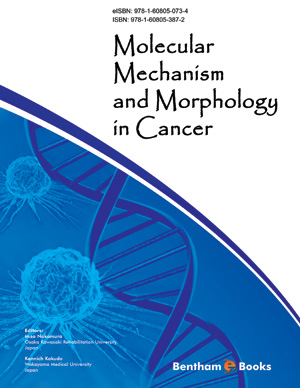Abstract
The current practice of relying solely on microscopic examinations for histological classification of gliomas and, consequentially, determination of optimal treatment, appears to be insufficient. As a result of the increasing use of molecular markers in tumor classification, there is an emerging emphasis in the genetic profiles of distinct subtypes of glioma. Glioblastomas classified as WHO grade IV are the most malignant astrocytic tumors and may develop either as de novo primary glioblastomas or as secondary glioblastomas arising from lower-grade astrocytomas. Both primary and secondary glioblastomas show similar histological features, but these subtypes constitute molecularly distinct entities evolving through different genetic pathways and likely to differ in prognosis and in response to therapy. The standard of care involves postoperative radiotherapy with concomitant and sequential administration of temozolomide (TMZ); however, the methylation status of O6-methylguanine-methyltransferase (O6-MGMT) appears to relate to TMZ resistance. Oligodendroglioma (WHO grade II) and anaplastic oligodendroglioma (WHO grade III) are particular glioma subtypes, derived from oligodendrocytes, that show remarkable response to a specific chemotherapy regimen of procarbazine + CCNU + vincristine (PCV), making their correct diagnosis important. Without the availability of typical morphological features, however, histological differentiation of oligodendrogliomas from astrocytoma is highly subjective. Inclusion of such molecular markers – for example, loss of heterozygosity (LOH) on chromosomes 1p and 19q, which is correlated with sensitivity to PCV chemotherapy and with increased survival in patients specifically with oligodendroglial tumors - will help to tailor treatment to the individual patient. This article reviews biological and molecular approaches to glioma classification that have the potential to increase the efficacy of treatments for these tumors.






















